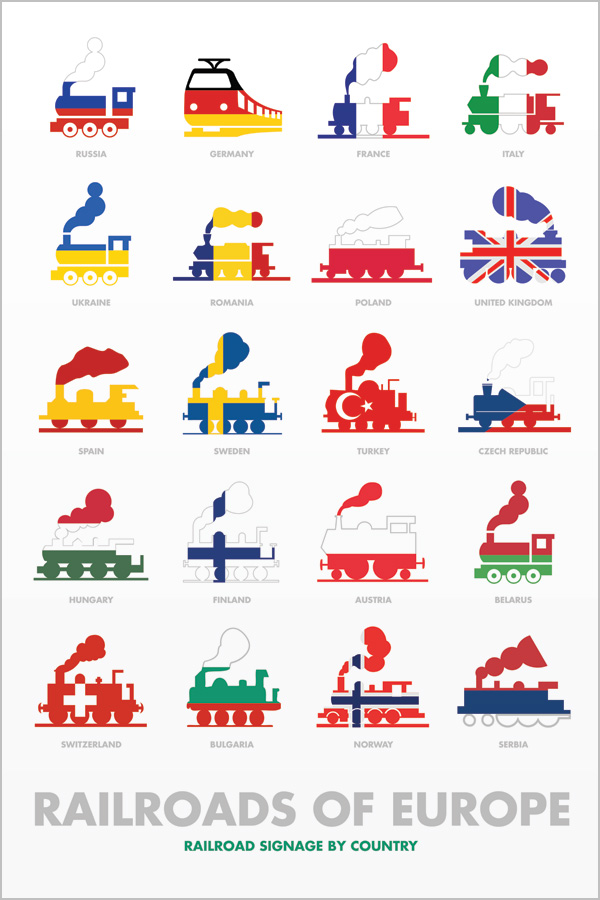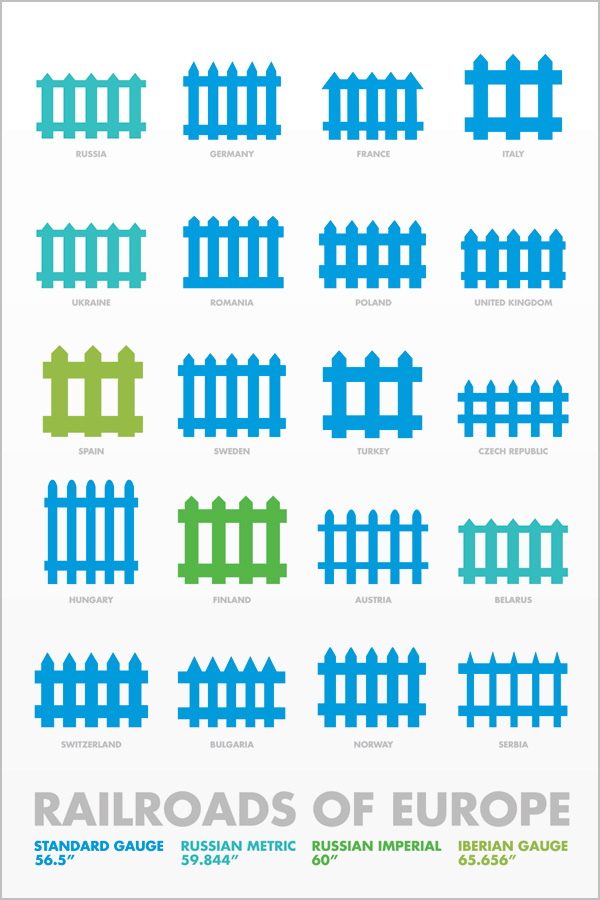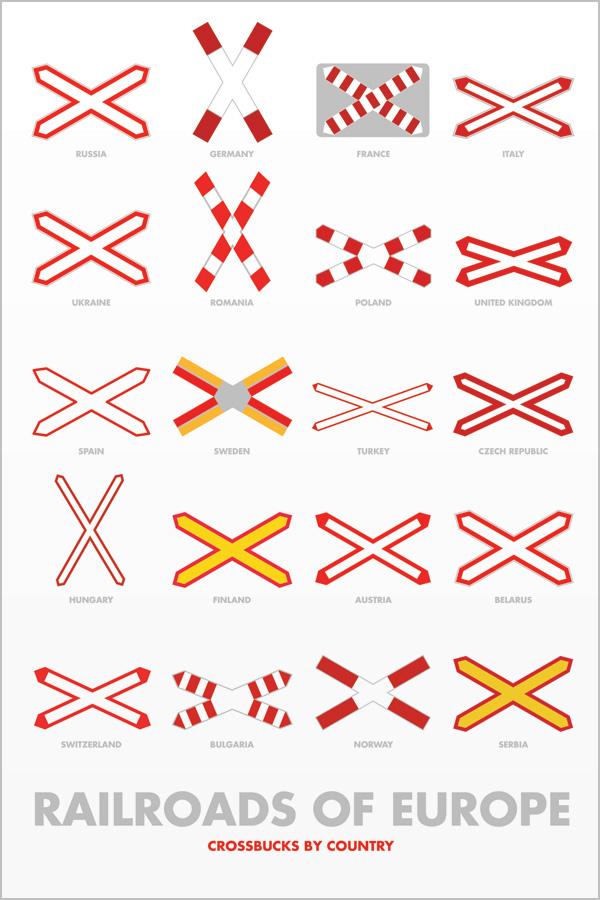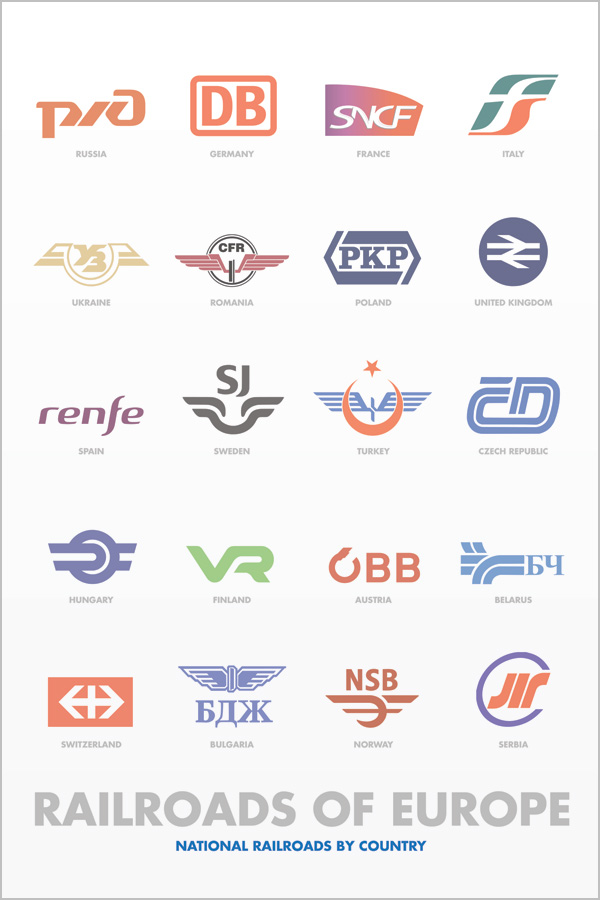Across the globe, most countries have a set of standardized street signs. Many use similar concepts and are mutually intelligible by outsiders based on pictographs. Though the meaning may be easily gleaned, it is interesting to note the wide variety of pictographs used by each country. Despite the fact that modern trains are hardly reminiscent of the steamers of yesteryear, the steam train is the pictograph of choice to convey the idea of “train.”
In some late-night weekend boredom, I worked on a set of four posters showing the trains of Europe through the lens of street signs and their pictographs. The first one features the pictographs used by each European country to represent trains, in the colors of their flags. The top 20 countries are shown in descending order based on how many miles of rail they have.
Technically speaking, the train pictograph in the first poster represents a grade crossing without barriers. An alternate sign is in use for crossings with barriers, and it uses a pictograph the resembles a cross between railroad tracks and a fence. I used that pictograph to show the differing track gauges used in Europe in the second poster.
Crossbucks are are a ubiquitous part of rail systems, in the many places where trains converge with streets. Though most countries use a similar concept, the colors and proportions vary widely, shown in the third poster.
And just for fun, I made one more poster which shows the logos of the primary railroads in each country.




